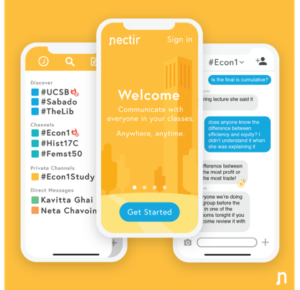“Raise your hand if you have any questions.”
Raise your hand if you’ve heard this statement a million times followed by pin-drop silence. After 3 years in college, I can count on one hand the number of times that I’ve actually seen a hand held high after this classic inquiry. I wish this meant that we all understood exactly what the professor was trying to explain, however this is not the case. Professors and students alike have been conditioned to go numb to this question. We’ve fallen into a robotic trance of staring blankly at a talking podium while copying the slideshow above word for word. This isn’t to say that we aren’t learning, just that we clearly aren’t absorbing information in a way that engages our interest. For a 5-digit price tag that seems to follow you around for life, I believe that we deserve to feel an equally valuable passion for the subjects we spend hundreds of hours learning. When you read reviews for college courses on sites like Rate My Professor, almost every review is reduced to the criteria for how easy it is to get an A, how little reading you need to do to pass, and how many times you can skip class before it becomes a problem. Shouldn’t we instead be inspired to write about how exciting the lectures are, the vibrant dynamic amongst your classmates, or the magnetic pull of the topics presented? Higher education is beginning to feel less like a privilege and more like an economic and societal burden that is a prerequisite to making ends meet. Three years at one of the top public universities in the world has made me question it’s true purpose an uncomfortable amount of times.
My junior year was spent sharing a boisterous but beautiful house on the beach with 12 other UC Santa Barbara students. Coming from all walks of life, our living room became a melting pot of engaging conversations each night as we unraveled from our stressful schedules. Our “Yello Haus”, as we called it, was teeming with talent, from graphic designers to beatmakers to business tycoons. It was here that the idea of Nectir was born, during one of the many long-winded rants we would all go on about how we weren’t getting what we needed from our education. From the sophomores to the seniors, every one of my housemates agreed on one thing–college itself could definitely be executed better than its current state. This is where my interest was piqued; what solutions would we potentially be looking for to these issues we were having? Everyone complains about school, but what were the legitimate problems? We bounced ideas back and forth for weeks, with suggestions ranging from creating an online library of lectures so that topics could be reinforced at any time to starting an online tutoring service that matches students to an expert within their university. A trend emerged through all the cluttered opinions–the one thing we were all searching for was adding value to our current education. College as we knew it was still amazing, but we were constantly reminded of the $40,000 we were investing into classes that often got skipped and forgotten. So what could we do to make our courses more fulfilling?

When I think back through my repertoire of courses, which is speckled with diversity from multiple major changes, one in particular stands prominently in my memory. As a prerequisite for getting into my Communication major, I took UC Santa Barbara’s ‘Theories of Communication’ course the summer before my junior year. Summer classes are often taught by experienced graduate level students who are so well-versed in their course topics that you would never guess they weren’t experienced professors. My Comm 89 course happened to be taught by a grad student who was quickly recognized by our class as someone who understood exactly how our generation needed to be taught. On the first day, our class of almost 50 was welcomed with upbeat music filling the sweltering room. The board featured a Spotify link which he explained was a public playlist to which we could add our favorite music. A class that greets you with music that you get to choose? An excited chatter reverberated through the room as we all realized this wouldn’t be like the dreaded summer school we were expecting. But the best surprise came from the second URL on the board–an invitation link to a Slack workspace for our class. If you aren’t familiar with the billion dollar group messaging giant that is Slack, it is essentially a customizable workspace that was designed to increase rapid group communication and kill emails. The class listened in awe as he explained how we were expected to type any questions we had during lecture into our general chat. The professor would periodically check the channel and answer anything that needed clarification. If we had questions after hours, we were encouraged to ask and answer them ourselves in the same channel to further reinforce our knowledge of the topics. The sole purpose of creating this mode of communication for us was to ensure that we grasped the concepts in their entirety. The professor knew how powerful social networks were to people who grew up on them and used that to both his and our advantage. I can say with certainty that not one student in our class was opposed to this revolutionary tool once they realized it’s value. A course that is known amongst UCSB students to be just “busy work and memorization” turned into a shockingly interesting symposium of fresh thoughts based on classic theories. To this day, it was my favorite class at UC Santa Barbara for this exact reason. There was no doubt in any of our mind’s that our grades turned out as high as they did due to the unprecedented level of engagement, particularly with one another rather than with our professor. Not only did we learn better from each other than we would’ve on our own, we made friends while doing it. Me and my classmates are proof that increasing communication amongst students in a fun and efficient way, like a group chat app, made for a fulfilling and memorable learning experience. So now that we had found a way to add extremely necessary value to a class, how could we scale this across an entire university? Slack alone wouldn’t exactly cut it.
As we’ve learned, communication and collaboration seems to lead to more powerful ideas. This is exactly how my housemate Jordan and I came up with one that would soon become the ultimate solution to our problems. What if we could take a platform like Slack and scale it across every course at every university? Using Slack, one would need to create a new workspace for every single class and give out an individual link to allow students to join. We knew it wasn’t a viable solution on it’s own, so we set out to create one. Hundreds of candid conversations with students and a deep passion for revolutionizing education came together to create Nectir. Nectir is a social education platform that drastically multiplies student communication to create more connected campuses everywhere. Optimized to each individual university, students use their .edu email to quickly create an account and receive access to class group chats for every course on their campus. Searchable by major, one simply has to select their classes for the quarter and are instantly added to each channel with the rest of their classmates. Once you’re done with the class, you may easily exit the channel to remove it from your dashboard. As long as you’re a student of that university, you’ll always have access to every channel at your school, meaning you can view the valuable messages and resources in each channel whenever you need. Classmates can use these permanent channels to ask and answer each other’s questions, share resources, create study groups, and more. Lost on an important topic from lecture today? Post your question in the class channel and another student will have the opportunity to reinforce their understanding of it by reiterating it to you. Dropped your Hydroflask while the professor was announcing the topics on the final? No problem, simply open the Nectir app, ask away, and a fellow classmate will fill you in. You can also use Nectir to directly message your classmates, create private channels for study groups, and even create public channels for any classes or topics you don’t see. Whether you want to join the #Econ10A class discussion or find out what’s happening at the #AnacapaDorms, it’s an app personalized to your community that connects the campus with ease. Nectir does more than solve simple communication issues, it provides a resource for students to instantly connect with a deeper wealth of knowledge than ever imagined. By giving college students a much needed tool to make passive learning more active, we are encouraging a shift in how education should be provided everywhere.

Eric Mazur, a Physics professor at Harvard, described his traditional lectures as simply a “transfer of information”, noticing a widespread loss of learning and retention amongst his students. For years he remained puzzled as to how to wake up his class and keep them engaged, until he looked to the students themselves for the answer. Creating a conversational environment where students consulted with one another to find the answer to topic-related questions resulted in soaring grades. In his master class on the benefits of interactive teaching, Mazur explains how something as simple as students communicating to collectively find the answer can triple “learning gains” and help students become emotionally invested in the subject. Nectir optimizes this practice to allow every class on campus to become instantly interactive. With an easy-to-use app that students can access at any time, we are taking learning into our own hands. The best part is that Nectir was made by the same students who will use it, ensuring that every facet is created with one thing in mind–adding more value to our education. We have poured countless hours into crafting a multidimensional yet simple application that students across the globe can utilize to make their university experience the best it can possibly be. Our dream is that soon college students everywhere will look to Nectir as the precedent for communication. The future of higher education has finally arrived and it’s only going to get better from here.
A repurposed version of this post has been featured on Nectir’s Medium blog. Find it here.
